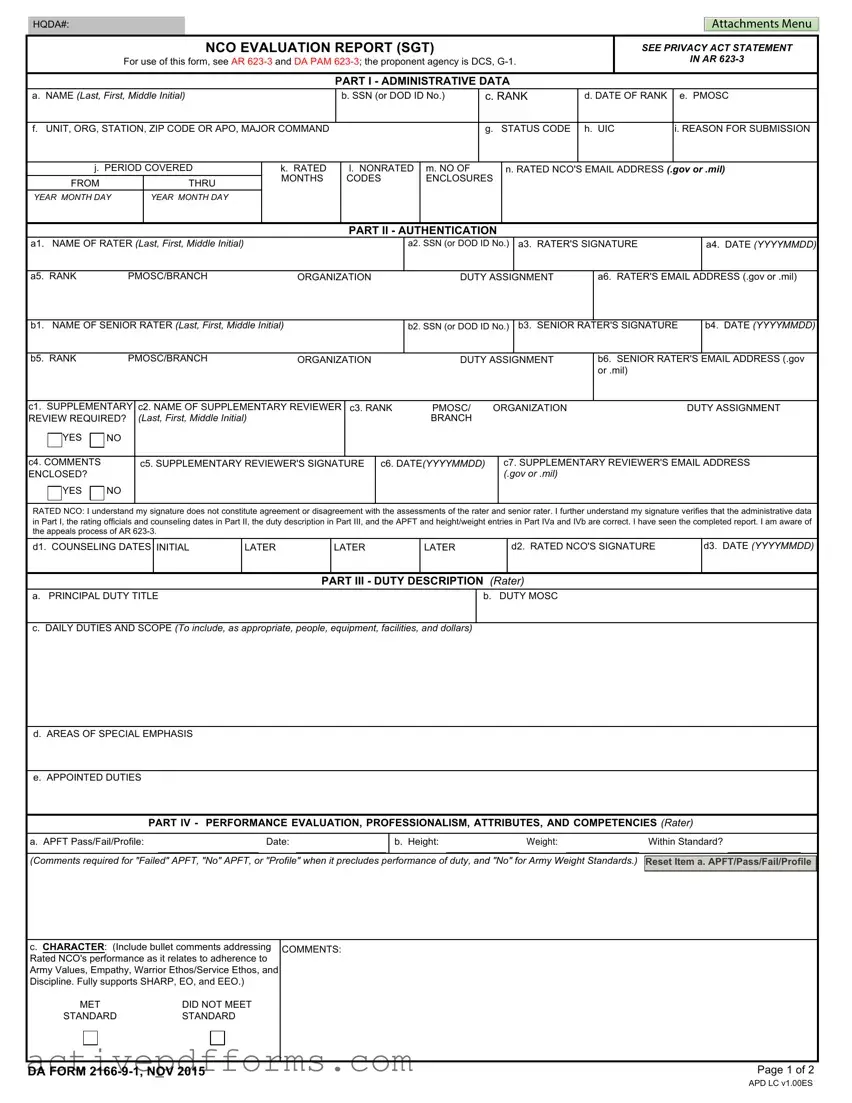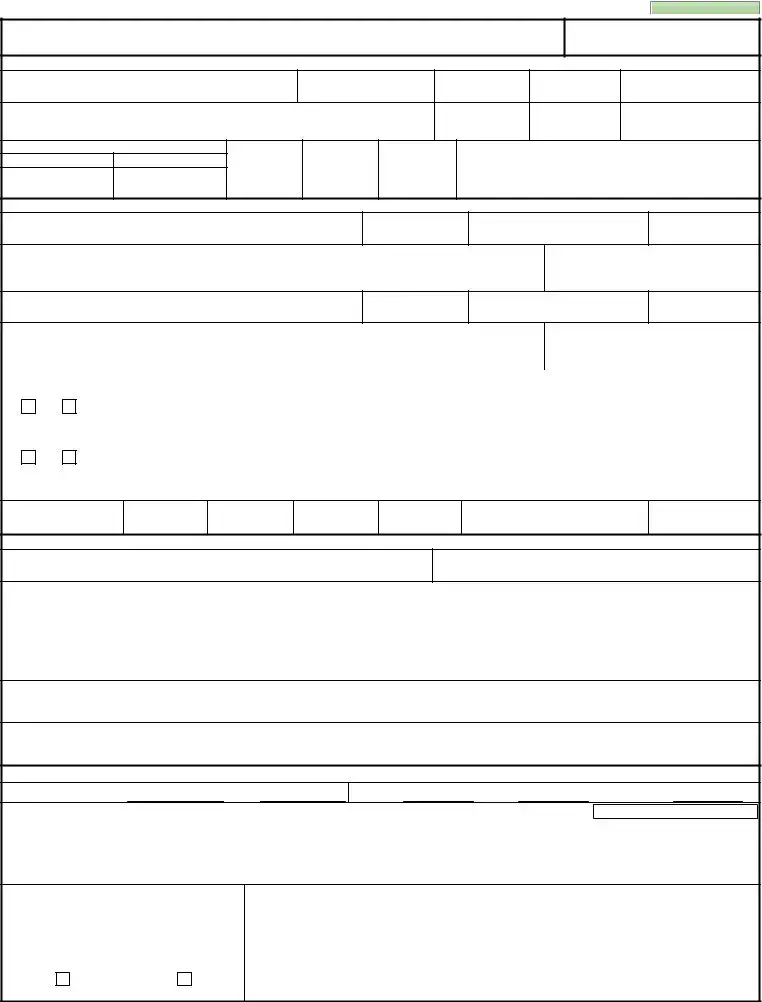The DA Form 2166-9-1, known as the NCO Evaluation Report (SGT), is a comprehensive document used within the United States Army for the evaluation of non-commissioned officers (NCOs) at the sergeant level. This form is crucial for understanding and recording the performance and potential of NCOs, providing a standardized method to assess and guide their career progression. It includes details ranging from administrative data to in-depth performance evaluations across various competencies. The evaluation covers a wide array of areas, including leadership skills, professional behavior, and the ability to achieve results, all while upholding Army values and standards. Designed with the intent of fostering growth and development, this form plays a pivotal role in making decisions about promotions, assignments, and additional training opportunities. Critical components such as adherence to Army Values, empathy, Warrior Ethos, and discipline are assessed, alongside the physical fitness standard adherence. Moreover, the form requires inputs from multiple raters to ensure a balanced and fair assessment, and it outlines a clear appeals process, ensuring transparency and accountability in the evaluation system. By focusing on a holistic view of an NCO's performance and potential, the DA 2166-9-1 aims to cultivate a highly skilled, adaptable, and professional NCO Corps within the Army.


